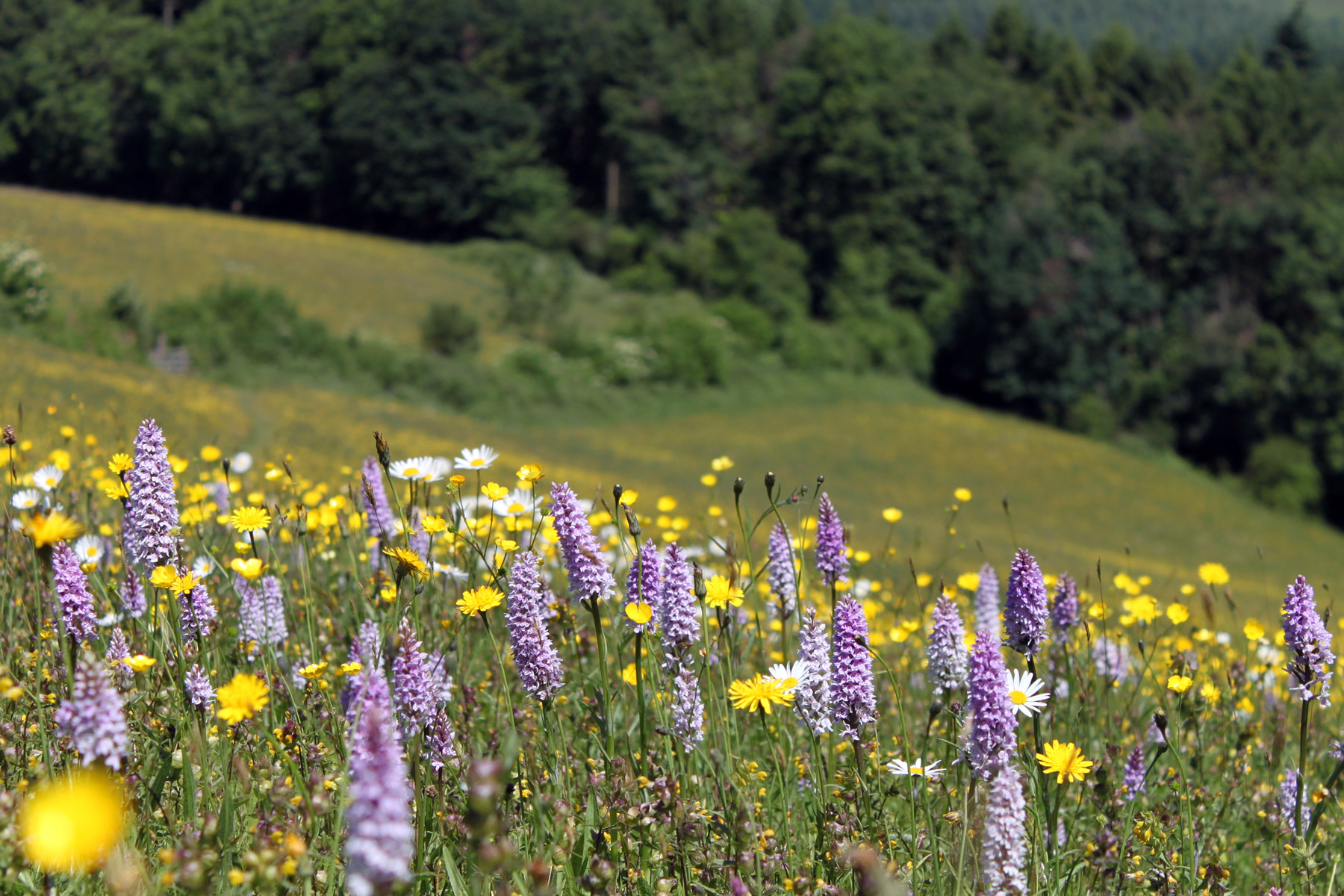Seedling Safari – First Stop of the Season.
Thanks to everyone who joined us at the Herefordshire Meadows Group discussion this week, it was great to be out in the field, despite the torrential rain. Many thanks to Ian Horsley of Baston Hall for hosting the event and showing us his young seedlings and letting us explore his older, flower rich bank.
It was excellent to be joined by Matt Pitts, Plantlife’s Meadow Adviser, as we looked at grassland restoration a few weeks after seeding. In mid-August Ian enhanced some of his permanent pasture with wildflower seed through the Boost for Biodiversity programme. During our visit, Ian explained the methods he is using, including harrowing, broadcasting rolling and the all important winter grazing. Further reassurance was given by Matt that careful grazing would benefit the young seedlings by removing competitive grasses. If you want further information on meadow restoration, this Meadow Restoration Plan gives guidance on the first year of a restoration project. The Plantlife’s Grassland Restoration time flow-chart takes you through the whole restoration process. Other useful guides can be found on our Meadow Restoration, Creation and Enhancement page.
During this visit we were also able to identify seedlings that have germinated over the past few months and see how Ian created some areas of bare ground to enable this. In particular, we were able to identify sorrel, oxeye daisy, yarrow, ribwort plantain, ladies bedstraw, knapweed and bird’s foot trefoil seedlings, all of which were well established. For guidance on plant and seedling identification there are leaflets and useful images on our Surveying and Monitoring page.
Towards the end of our visit we were shown an old meadow, which is thought to have not been cultivated for centuries, and as a result was exceptionally species rich and diverse. A highlight was finding a yellowy orange waxcap mushroom, which indicates very old and undisturbed grassland. Matt f urther informed us that it can take hundreds of years for underground root and fungal networks to develop and support this kind of species. Cultivation destroys this network. For more information on waxcaps and ID sheets visit this past event on Grassland Waxcaps. Plantlife have developed a Waxcap Fungi App, and also have a very useful Guide to Waxcaps and how to identify them.
urther informed us that it can take hundreds of years for underground root and fungal networks to develop and support this kind of species. Cultivation destroys this network. For more information on waxcaps and ID sheets visit this past event on Grassland Waxcaps. Plantlife have developed a Waxcap Fungi App, and also have a very useful Guide to Waxcaps and how to identify them.
This was the first of our autumn seedling safaris and was a great chance to see a meadow in early establishment. This event was particularly relevant and useful to those who have enhanced their meadow this year and wanted to know what to look out for this winter and develop their plant ID skills.




